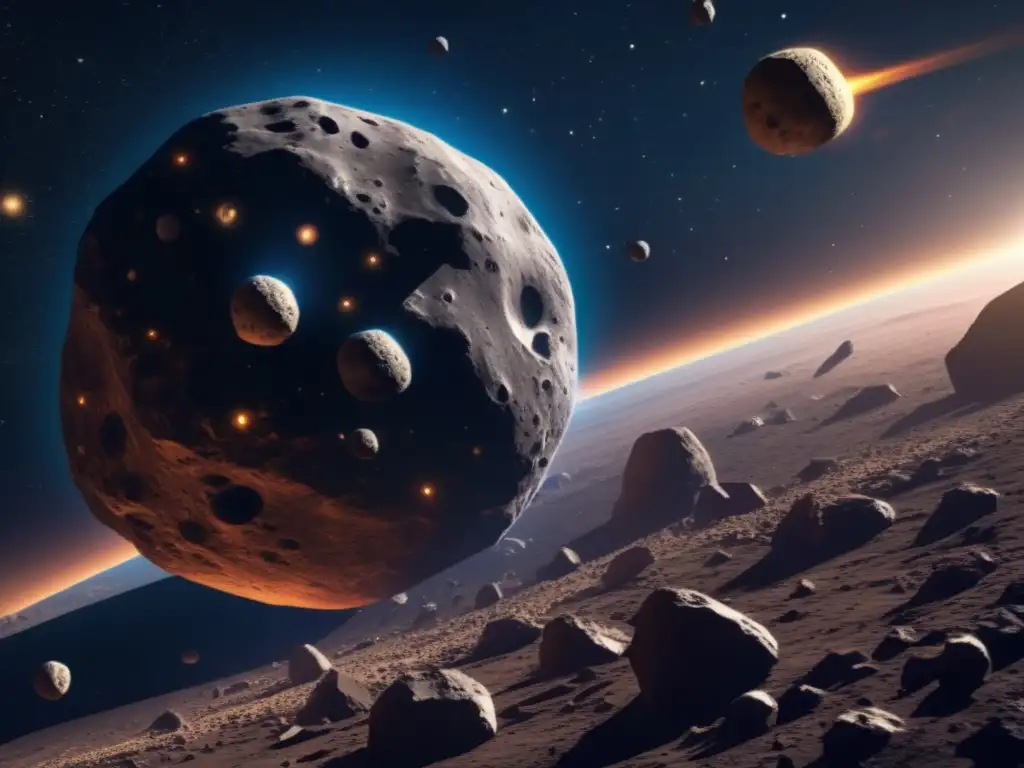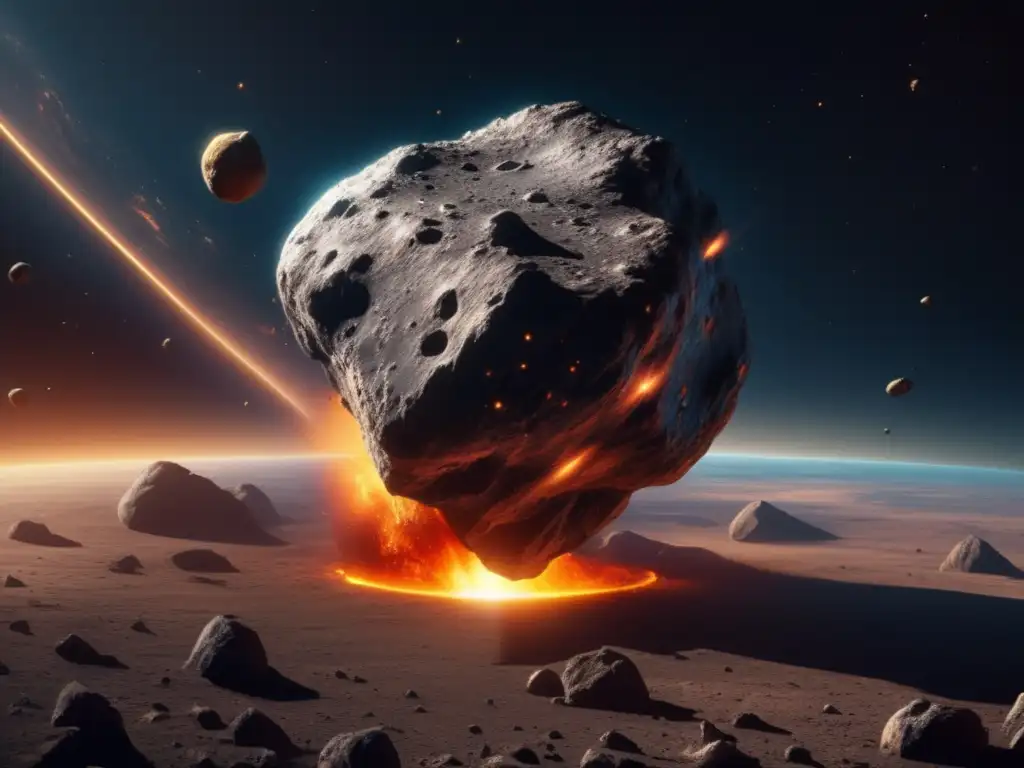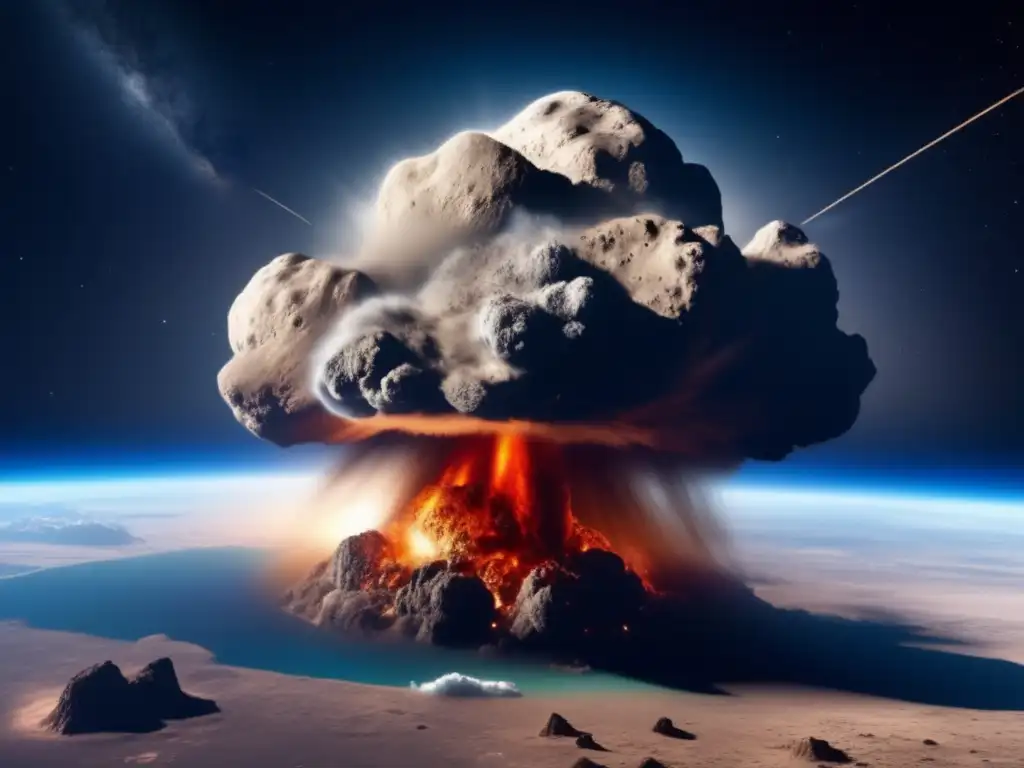When The Sky Falls: Asteroid Myths Explored

Introduction
Asteroids have always been sources of fascination for human beings. These small celestial bodies orbiting the Sun have been the subjects of myths, legends, and folklore across cultures and civilizations. From ancient beliefs to modern discoveries, this article will dive deep into the mythology, history, and cultural significance of asteroids.
Asteroids in Mythology and Folklore

The Greek and Roman Mythologies
In Greek mythology, the god Apollo's chariot was said to be pulled by fiery steeds that would create sparks and meteors as they galloped across the skies. The Greeks believed that these meteors were actually splinters from the Sun and other planets that had been hurled down to Earth. In Roman mythology, the goddess Vesta was associated with both fire and the hearth, and her presence was believed to be felt in the appearance of shooting stars and fireballs in the sky.
The Norse Mythology
The Norse mythologies held a belief that the sparks that emanated from the hooves of their flying horses served as the source of all shooting stars. These sparks were called "sky-fires" or "sky-candles," and it was believed that they were either created by the gods or the spirits of the dead.
The Chinese Mythology
In Chinese mythology, the gemstone "yu" was said to have fallen from the heavens and landed on the Earth. According to the legend, the stone emitted a bright light and was warm to the touch, leading the people to believe that it was a gift from the gods.
The Native American Mythology
The Navajo people believed that the night sky was a reflection of their earthly world. The stars were seen as campfires, while meteorites were known as "stones from the sky." The Navajo people believed that these stones had the power to cure illnesses and that they were used in sacred rituals.
The Cultural Significance of Asteroids

Historical Significance
Asteroids have been studied by scientists since the 19th century, with the first asteroid being discovered in 1801 by Italian astronomer Giuseppe Piazzi. Since then, thousands of asteroids have been identified, with new discoveries continuing to be made. These celestial bodies have provided important data for the study of the solar system's formation and evolution.
Popular Culture
Asteroids have also captured the imagination of writers, filmmakers, and artists, who often depict them as signs of impending doom or as the source of extraordinary power. For example, in the Superman comics, Superman is weakened by exposure to fragments of his home planet Krypton, which had exploded and formed an asteroid belt. Similarly, the movie "Armageddon" features a team of oil drillers who are sent into space to destroy an asteroid that is hurtling towards Earth.
The Threat of Asteroid Impacts

History of Impacts
The Earth has been hit by asteroids numerous times throughout its history, with the most famous example being the extinction of the dinosaurs 66 million years ago. In 1908, an asteroid exploded over Siberia, creating an explosion equivalent to 5-10 megatons of TNT and flattening trees across an area of 2,000 square kilometers.
The Importance of Studying Asteroids
Studying asteroids is crucial in order to predict and prevent potential asteroid impacts on Earth. While the likelihood of a large asteroid hitting the planet in any given year is low, the consequences of such an impact could be catastrophic. Scientists are working to identify potentially hazardous asteroids and to develop methods for deflecting them away from Earth if necessary.
Frequently Asked Questions

-
Can asteroids really cause mass extinctions?
Yes, large or multiple impacts by asteroids can cause mass extinctions. The most famous example is the extinction of the dinosaurs 66 million years ago.
-
What methods are being developed to deflect potentially hazardous asteroids?
One method being explored is the use of kinetic impactors, which would send a spacecraft crashing into the asteroid to change its trajectory. Another method involves the use of gravity to slowly alter the asteroid's orbit over time.
-
How likely is it that an asteroid will hit the Earth in our lifetimes?
The chance of a large asteroid hitting the Earth in any given year is low, but it is still important to study asteroids and develop methods for preventing potential impacts.
-
Are there any asteroids that have the potential to hit the Earth in the future?
There are currently no known asteroids that pose an immediate threat to Earth, but scientists are constantly monitoring the skies for new potential threats.
-
What can I do to help prevent asteroid impacts?
You can support funding for asteroid detection and deflection programs, as well as raise public awareness about the potential threat of asteroid impacts.
Conclusion
Asteroids have been the subject of myths, legends, and folklore for thousands of years, and they continue to captivate our imaginations today. While asteroid impacts on Earth are rare, they can be catastrophic, making it important to study these celestial bodies and develop methods for deflecting potentially hazardous asteroids. By understanding the cultural significance and potential threats of asteroids, we can better appreciate the wonders of our solar system and work towards protecting our planet from harm.
Thank you for reading this article on Asteroid Realm. We encourage you to share your thoughts and feedback in the comments section, and to subscribe to our website for more articles on asteroids and other fascinating topics in astronomy.
Additional Resources

For more information about asteroids and their impact on our world, please visit the following resources:
 Asteroids In Pre-Colonial Filipino Mythology
Asteroids In Pre-Colonial Filipino Mythology Celestial Bodies In Folklore: The Role Of Asteroids
Celestial Bodies In Folklore: The Role Of Asteroids The Universe's Canvas: Asteroids In Prehistoric Petroglyphs
The Universe's Canvas: Asteroids In Prehistoric PetroglyphsIf you want to discover more articles similar to When The Sky Falls: Asteroid Myths Explored, you can visit the Asteroid Mythology category.
Leave a Reply

Articulos relacionados: